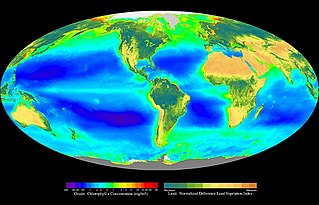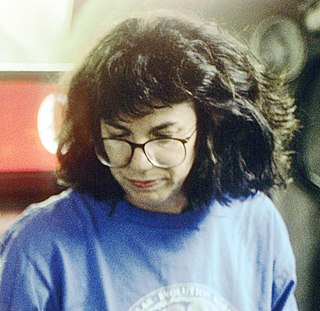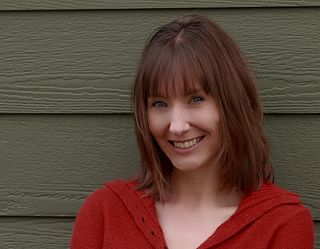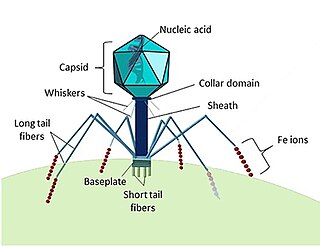Related Research Articles

The biosphere, also known as the ecosphere, is the worldwide sum of all ecosystems. It can also be termed the zone of life on Earth. The biosphere is virtually a closed system with regard to matter, with minimal inputs and outputs. With regard to energy, it is an open system, with photosynthesis capturing solar energy at a rate of around 130 Terawatts per year. However it is a self-regulating system close to energetic equilibrium. On land, the soil carbon sponge is a regulatory component of this system. By the most general biophysiological definition, the biosphere is the global ecological system integrating all living beings and their relationships, including their interaction with the elements of the lithosphere, cryosphere, hydrosphere, rhizosphere and atmosphere. The biosphere is postulated to have evolved, beginning with a process of biopoiesis or biogenesis, at least some 3.5 billion years ago.

Marine biology is the scientific study of the biology of marine life, organisms in the sea. Given that in biology many phyla, families and genera have some species that live in the sea and others that live on land, marine biology classifies species based on the environment rather than on taxonomy.
Planetary engineering is the development and application of technology for the purpose of influencing the environment of a planet. Planetary engineering encompasses a variety of methods such as terraforming, seeding, and geoengineering.

Microbial ecology is the ecology of microorganisms: their relationship with one another and with their environment. It concerns the three major domains of life—Eukaryota, Archaea, and Bacteria—as well as viruses.
An extreme environment is a habitat that is considered very hard to survive in due to its considerably extreme conditions such as temperature, accessibility to different energy sources or under high pressure. For an area to be considered an extreme environment, it must contain certain conditions and aspects that are considered very hard for other life forms to survive. Pressure conditions may be extremely high or low; high or low content of oxygen or carbon dioxide in the atmosphere; high levels of radiation, acidity, or alkalinity; absence of water; water containing a high concentration of salt or sugar; the presence of sulphur, petroleum, and other toxic substances.

Colleen Marie Cavanaugh is an American academic microbiologist best known for her studies of hydrothermal vent ecosystems. As of 2016, she is the Edward C. Jeffrey Professor of Biology in the Department of Organismic and Evolutionary Biology at Harvard University and is affiliated with the Rowland Institute. Cavanaugh was the first to propose that the deep-sea giant tube worm, Riftia pachyptila, obtains its food from bacteria living within its cells, an insight which she had as a graduate student at Harvard. Significantly, she made the connection that these chemoautotrophic bacteria were able to play this role through their use of chemosynthesis, the biological oxidation of inorganic compounds to synthesize organic matter from very simple carbon-containing molecules, thus allowing organisms such as the bacteria to exist in deep ocean without sunlight.
The Center for Microbial Oceanography (C-MORE) is a research and education organization established in 2006 as a National Science Foundation funded Science and Technology Center.

Astrobiology Science and Technology for Exploring Planets (ASTEP) is a program established by NASA to sponsor research projects that advance the technology and techniques used in planetary exploration. The objective is to enable the study of astrobiology and to aid the planning of extraterrestrial exploration missions while prioritizing science, technology, and field campaigns.

Marine microorganisms are defined by their habitat as microorganisms living in a marine environment, that is, in the saltwater of a sea or ocean or the brackish water of a coastal estuary. A microorganism is any microscopic living organism or virus, that is too small to see with the unaided human eye without magnification. Microorganisms are very diverse. They can be single-celled or multicellular and include bacteria, archaea, viruses and most protozoa, as well as some fungi, algae, and animals, such as rotifers and copepods. Many macroscopic animals and plants have microscopic juvenile stages. Some microbiologists also classify biologically active entities such as viruses and viroids as microorganisms, but others consider these as non-living.

Dr. Mary A. Voytek is the director of the National Aeronautics and Space Administration (NASA) Astrobiology Program at NASA Headquarters in Washington, D.C. In 2015, Voytek formed Nexus for Exoplanet System Science (NExSS), a systems science initiative by NASA, to search for life on exoplanets. Voytek came to NASA from the U.S. Geological Survey in Reston, VA, where she headed the USGS Microbiology and Molecular Ecology Laboratory from 1998 to 2009.
Cindy Lee Van Dover is the Harvey Smith Professor of Biological Oceanography and chair of the Division of Marine Science and Conservation at Duke University. She is also the director of the Duke University Marine Laboratory. Her primary area of research is oceanography, but she also studies biodiversity, biogeochemistry, conservation biology, ecology, and marine science.
The Deep Carbon Observatory (DCO) is a global research program designed to transform understanding of carbon's role in Earth. DCO is a community of scientists, including biologists, physicists, geoscientists and chemists, whose work crosses several traditional disciplinary lines to develop the new, integrative field of deep carbon science. To complement this research, the DCO's infrastructure includes public engagement and education, online and offline community support, innovative data management, and novel instrumentation development.
Katrina Jane Edwards was a pioneering geomicrobiologist known for her studies of organisms living below the ocean floor, specifically exploring the interactions between the microbes and their geological surroundings, and how global processes were influenced by these interactions. She spearheaded the Center for Dark Energy Biosphere Investigation (C-DEBI) project at the University of Southern California, which is ongoing. Edwards also helped organize the deep biosphere research community by heading the Fe-Oxidizing Microbial Observatory Project on Loihi Seamount, and serving on several program steering committees involving ocean drilling. Edwards taught at the Woods Hole Oceanographic Institution (WHOI) and later became a professor at the University of Southern California.[1][2]

Trista Vick-Majors is an American Assistant Professor in Biological Sciences at Michigan Tech. She is an Antarctic biogeochemist and microbial ecologist, best known for her work showing that microorganisms are present under the Antarctic ice sheet.
Julie Huber is an associate scientist in the Marine Chemistry and Geochemistry department at Woods Hole Oceanographic Institution. She previously was an associate professor of ecology and evolutionary biology at Brown University, an associate scientist at the Marine Biological Laboratory in Woods Hole, Massachusetts, and the associate director of the MBL's Josephine Bay Paul Center for Comparative Molecular Biology and Evolution. She also serves as the associate director of the Center for Dark Energy Biosphere Investigations, a National Science Foundation-supported program headquartered at the University of Southern California.

The viral shunt is a mechanism that prevents marine microbial particulate organic matter (POM) from migrating up trophic levels by recycling them into dissolved organic matter (DOM), which can be readily taken up by microorganisms. The DOM recycled by the viral shunt pathway is comparable to the amount generated by the other main sources of marine DOM.

The hydrothermal vent microbial community includes all unicellular organisms that live and reproduce in a chemically distinct area around hydrothermal vents. These include organisms in the microbial mat, free floating cells, or bacteria in an endosymbiotic relationship with animals. Chemolithoautotrophic bacteria derive nutrients and energy from the geological activity at Hydrothermal vents to fix carbon into organic forms. Viruses are also a part of the hydrothermal vent microbial community and their influence on the microbial ecology in these ecosystems is a burgeoning field of research.

Marine viruses are defined by their habitat as viruses that are found in marine environments, that is, in the saltwater of seas or oceans or the brackish water of coastal estuaries. Viruses are small infectious agents that can only replicate inside the living cells of a host organism, because they need the replication machinery of the host to do so. They can infect all types of life forms, from animals and plants to microorganisms, including bacteria and archaea.
John A. Baross is an American marine microbiologist and professor of oceanography and astrobiology at the University of Washington who has made significant discoveries in the field of microbial ecology of hydrothermal vents and the physiology of thermophilic bacteria and archaea.
Elizabeth Kujawinski is an American oceanographer who is Senior Scientist at the Woods Hole Oceanographic Institution, where she works as Program Director of the Center for Chemical Currencies of a Microbial Planet. Her research considers analytical chemistry, chemical oceanography, microbiology and microbial ecology. She is interested in what controls the composition of organic materials in aquatic systems.